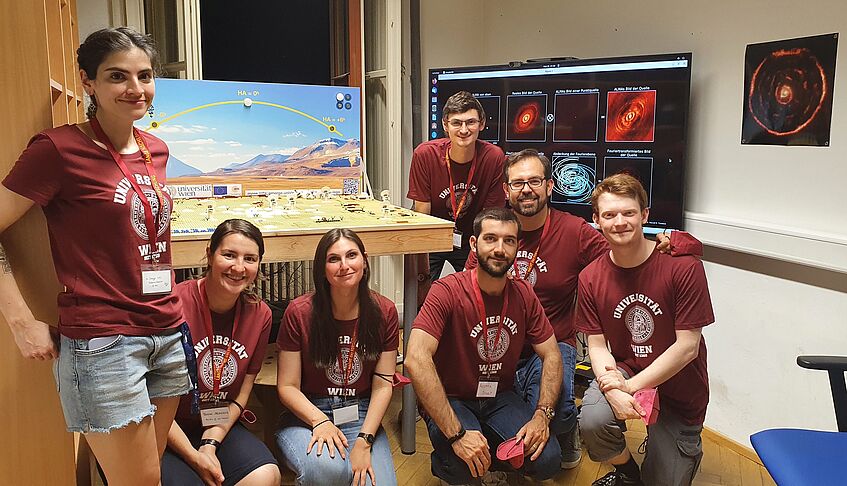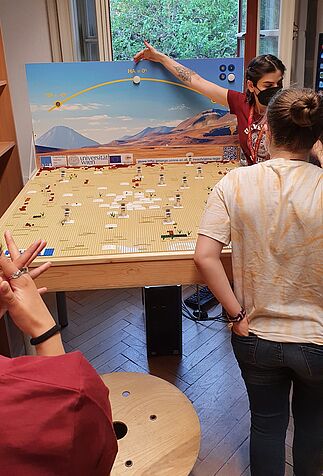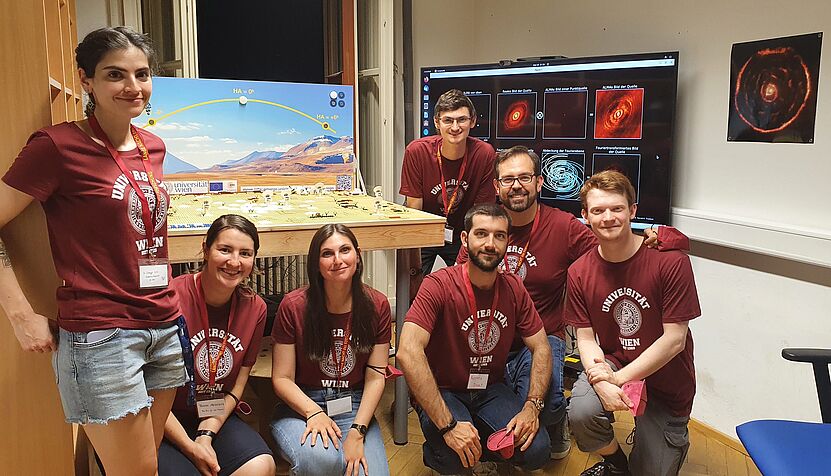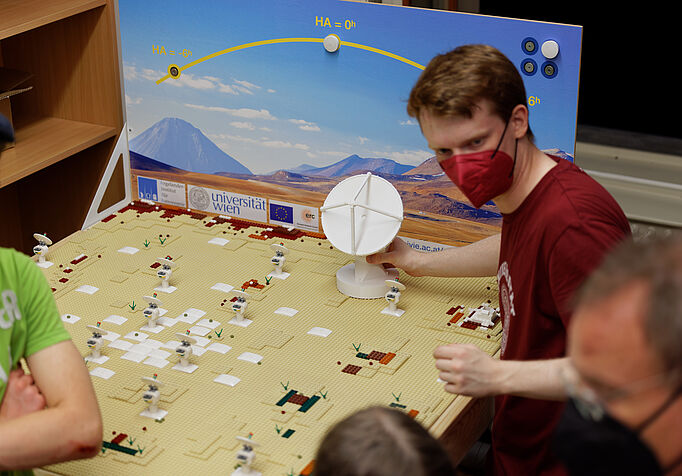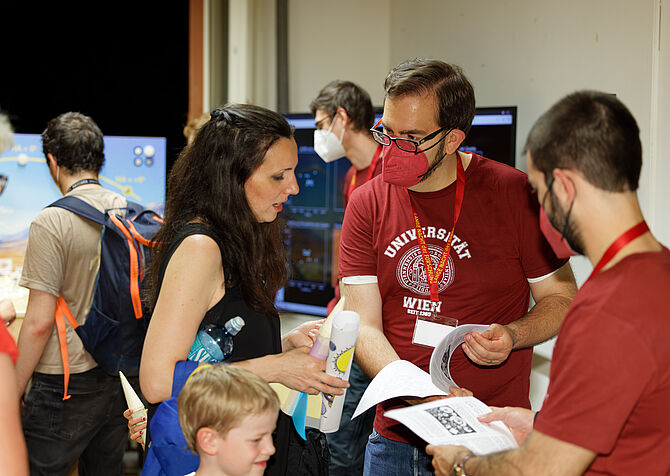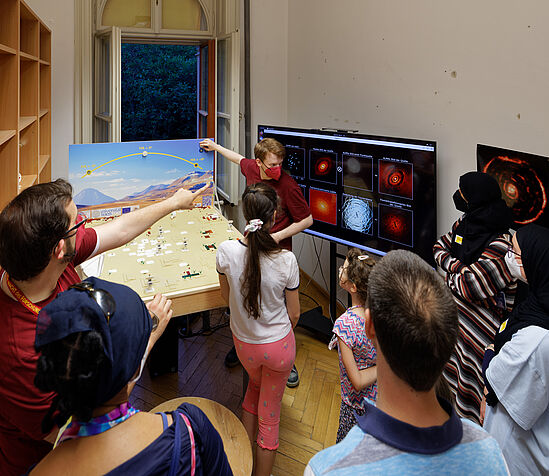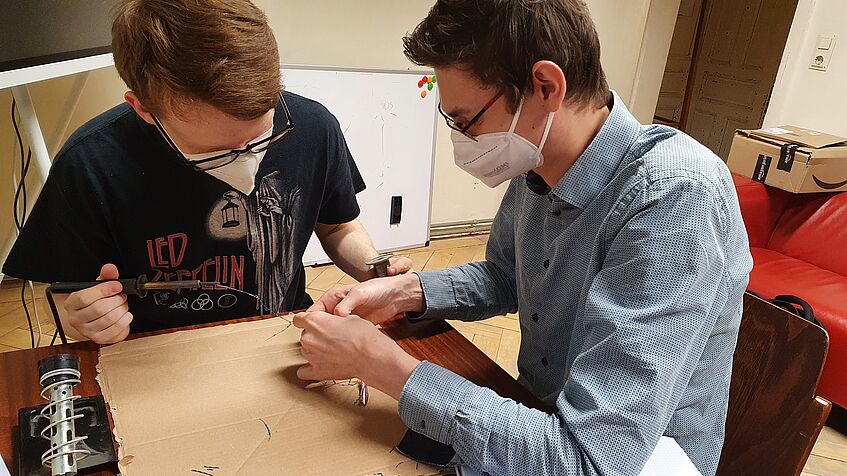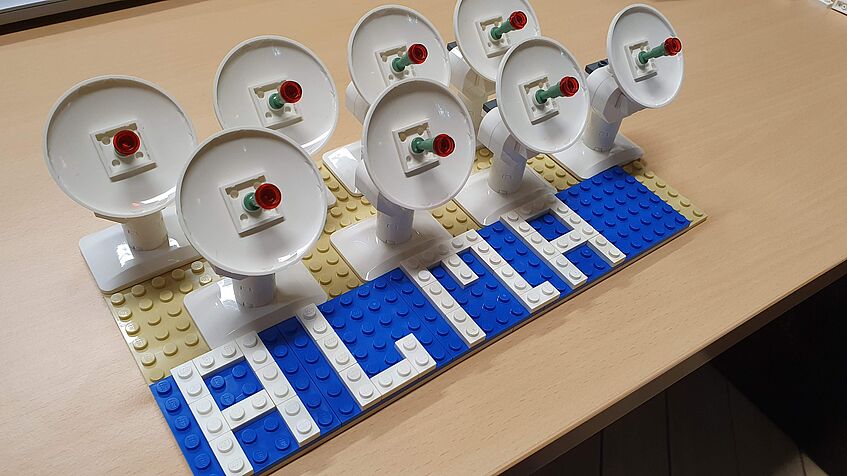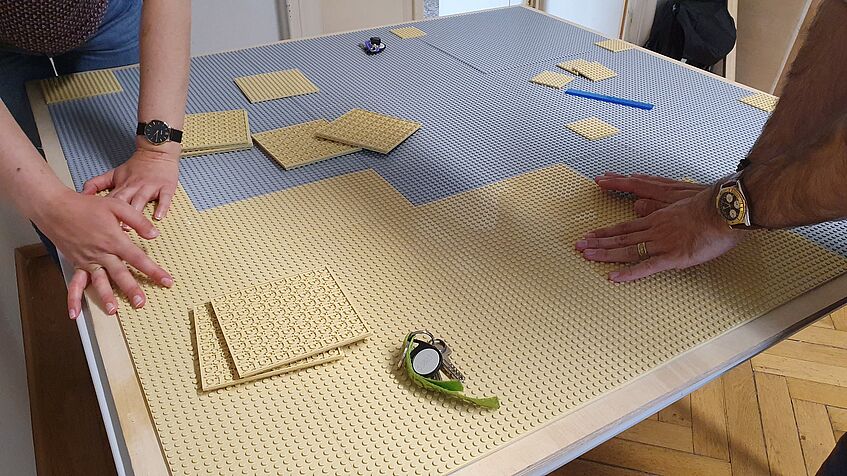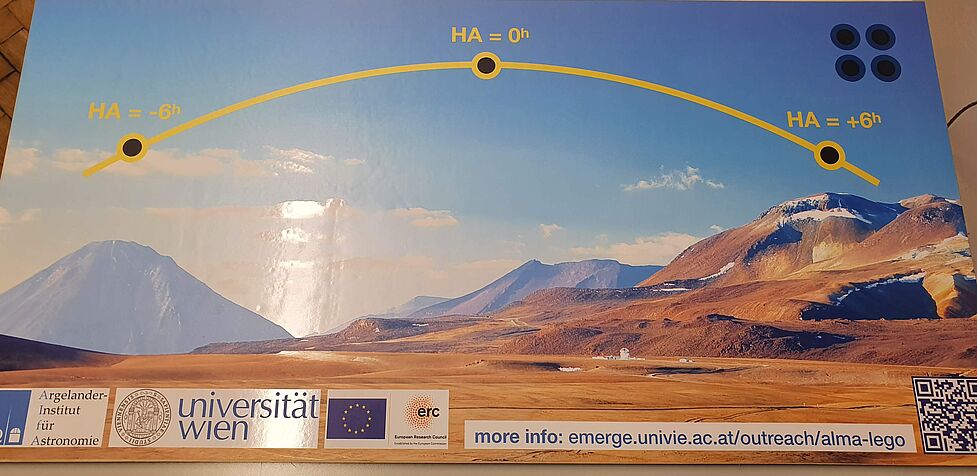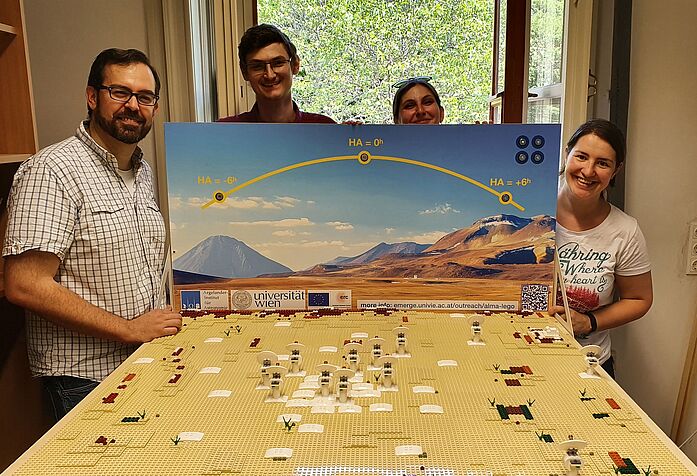ALMA Lego
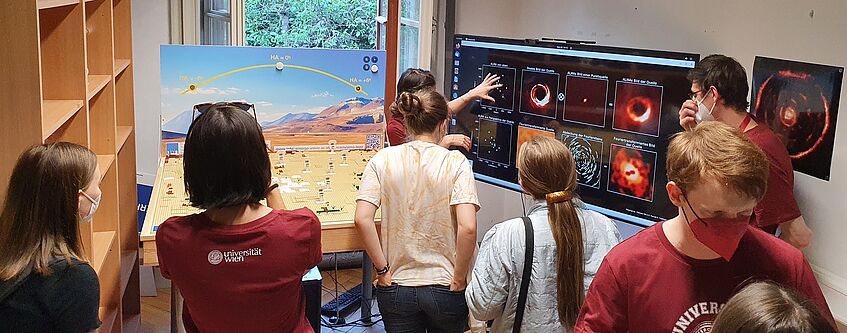
The ALMA Lego is an outreach tool created to explain how astronomers use radio-interferometers such as ALMA to obtain some of the most detailed and striking images of the Universe. The ALMA Lego model is a collaboration between the EMERGE ERC-StG project in Vienna (Austria) and the Argelander Institute für Astronomie in Bonn (Germany). The ALMA Lego is a reproduction of the original LEGO ALMA design created by the Argelander Institute für Astronomie (AIfA) and the German ARC node in Bonn (link). The ALMA Lego will be presented in Vienna at the Lange Nacht der Forschung 2022 on May 20, 2022 (https://langenachtderforschung.at).
Acknowledgements
The EMERGE ERC-StG team thanks the whole AIfA team in Bonn for sharing the technical description of the original design, providing the electronic system, and detailed instructions for the construction of this new model. We thank the expert advise and continuous support of Frank Bertoldi, Toma Badescu, and Philipp Müller. The ALMA Lego is powered by the Friendly VRI software (P. R. Truelove).
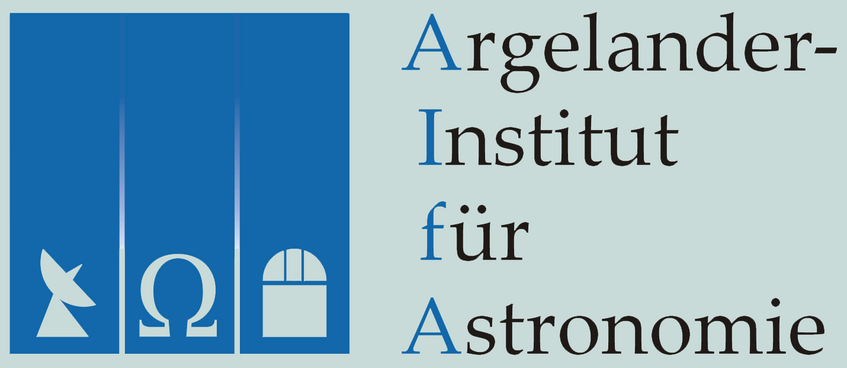

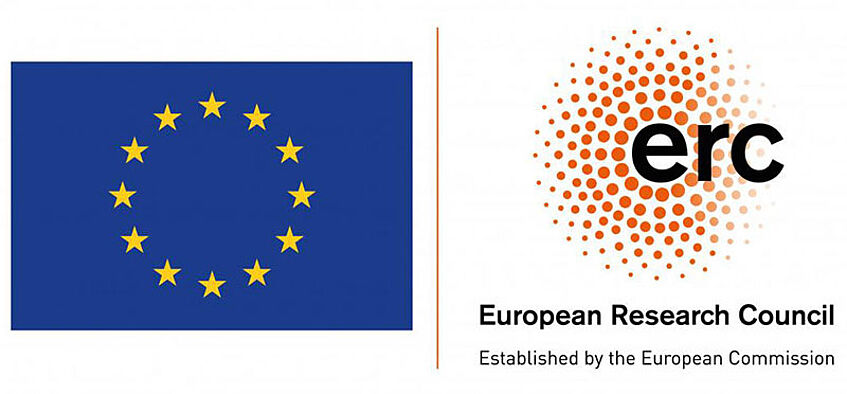

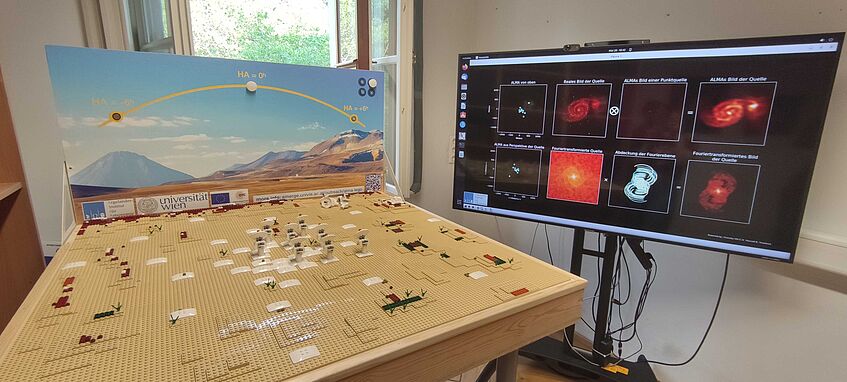
About ALMA
Atacama Large Millimeter/submillimeter Array (ALMA) is the largest radio interferometer in the world. It is located in the Chajnantor Plateau in the Atacama desert of Chile at an altitude of 5000 m. Consisting of 66 telescopes, ALMA operates at (sub-)millimeter wavelengths (0.32 mm to 3.2 mm), which are invisible to human eye, tracing the unknowns of the Universe. With its large number of antennas, ALMA provides a unique opportunity to observe stellar nurseries, planet forming disks, and the early Universe in details never seen before.
What is an interferometer?
The angular resolution of a single telescope scales with the size of the antenna dish and the observed wavelength. At a given wavelength, the only way to increase the angular resolution, is to increase the size of the antenna. But we can’t build antennas which are infinitely large to obtain higher angular resolutions. Instead we can use a combination of antennas which act as a single telescope. The angular resolution, then, scales with the distance between the individual antennas!
About our model
Our ALMA Lego model simulates the expected image recovered by the ALMA interferometer depending on the location of the antennas within the array. At a scale of 1/1000, our model tries to reproduce the ALMA C-5 configuration with distance between antennas up to ~1400 m. The locations of the different Lego antennas are read by an electronic system underneath the surface. Adding and moving antennas into different pads triggers a simulation which reproduces the expected image obtained by ALMA with the corresponding array configuration. With this outreach model our goal is to illustrate how interferometers such as ALMA are able to produce the sharpest radio images of the Universe.
Team
- David Krebs, Darwin Lober, Yanina Metodieva, Francesca Bonanomi, Andrea Socci, Sümeyye Suri, Sierk van Terwisga, Alvaro Hacar
